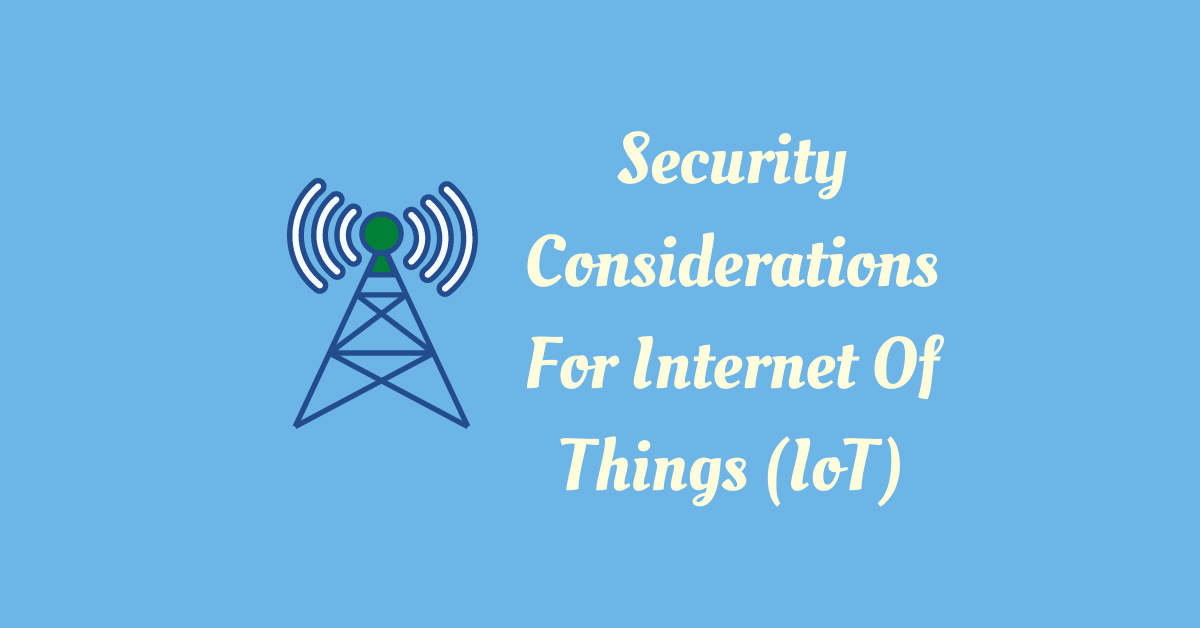This post will show you the security considerations for the Internet Of Things (IoT). Plus, there are five ways to secure IoT in your enterprise.
The overall market value for the Internet of Things is expected to reach a whopping $1.11 trillion in the next five years. We could expect as many as 21.5 billion IoT devices to be actively connected and ‘talking’ to each other by 2025.
It’s painful even to imagine the amount of data generated by each and the sheer computing prowess necessary to continually collect, exchange, analyze, and extrapolate this data for real-time usage.
This data will form the basis of everything from fuelling business decisions and understanding consumer behavior to pivoting marketing strategies, ensuring the safety of people in a workplace, and choosing which latte or traffic route to take in the morning.
However, the sheer rate at which the devices expand makes it highly challenging for enterprises to maintain control, manage efficiently, and keep the devices secure.
These devices offer a huge attack vector for hackers waiting to exploit the vulnerabilities. In a recent survey, 76% of cybersecurity risk professionals admitted that the Internet of Things leaves them wide open for cyber-attacks.
Table of Contents
Importance of Securing the Internet of Things Devices
In its essence, the Internet of Things is comprised of not just humans but billions of IoT devices talking to each other using the Internet autonomously to fulfill their specific functions. Do you use IoT-powered motion sensor-based lighting solutions or smart locks at home?
If so, they need to process the captured motion data within the fraction of a second it takes you to take a step and decide whether to keep the lights on or switch them off. That entire lightning-fast processing of data happens through the Internet.
Of course, that’s only a fundamental example of IoT functionality. True IoT is capable of running entire factory floors, with its evolving complexities, autonomously.
IoT represents a degree of autonomy and convenience that’s incredibly attractive for consumers (enterprise and public). This is driving widespread adoption much faster than the technology can mature before the devices can be adequately equipped with the required safety standards.
The resulting situation has been confusion and challenges arising from a lack of user awareness, inconsistent product standards, and poor product maintenance and updates scope. These give rise to various difficulties with specific operational IoT issues and vulnerabilities.
While IoT devices may captivate us with ingenuity, they lack complex security protocols and strong defensive capabilities. Low power and lack of computational capability, update mechanism, etc., make them a ripe target for malware attacks.
5 Ways To Secure IoT In Your Enterprise
1. Employ device discovery for visibility across the board
Part of the problem that makes IoT management unnecessarily complex is the lack of a direct line of sight into all the devices connected to an enterprise’s network. To remedy this, try to make a complete inventory of all devices connected to your network, categorize them, and keep the inventory updated.
Ideally, it would be best to try to manage the devices with a dedicated IoT security solution to authenticate and identify all devices. It would be best if you tried to keep stock of the manufacturer and model ID, the serial number, hardware, software, and firmware versions, and operating systems and configuration of each device.
You could also try to fully understand each device’s risk profile and connectedness with other network devices. These could be very helpful in installing and running advanced firewall protocols.
2. Actively Monitor IoT Devices
You should monitor, report, and alert all your IoT devices in real-time to manage risks. Please remember that regular endpoint security solutions require software agents that run fine on all your endpoints and may not be compatible with low-powered IoT devices.
This is why a real-time monitoring solution for all your network-connected IoT endpoints makes more sense to integrate with your existing security solutions. IT Support could be a good place to start looking for the best monitoring solution suited to your business needs.
3. Carefully configure your router
Your Wi-Fi router is the central connection to all your devices. Unauthorized access to your router can render all your devices vulnerable.
To prevent this from happening, try to personalize the name of your router and maintain pristine hygiene for login credentials.
Get rid of all personal identifiers in these. It would be best to use high-level encryption, such as WPA2, so your data and connections stay secure.
4. Adopt Secure Password Practices
Inadequate password hygiene continues to be responsible for most of our current attacks. Ensuring maximum password hygiene is necessary for all enterprises, especially the ones with numerous IoT endpoints.
Preset passwords on these devices are weak, and businesses should take care to change them the minute a new device is connected to their network. Please ensure the new password follows established enterprise IT security and password policies.
5. Keep an eye on vendor & supplier IoT practices
With supply chain attacks on the rise, enterprises can no longer turn a blind way toward the security practices of their vendors, suppliers, and even developers you might want to engage.
Suppose they come on board your network with weak security management and policies. In that case, it makes your entire network as vulnerable as theirs – despite all you could have done over the years to shore up your enterprise defenses.
You could be risking your company and consumers to risks without even perceiving them. It’s best to have strict vendor security standards and management policies in place and to ensure that all your existing and future vendors adhere strictly to them.
Monitoring and controlling vendor practices, especially concerning IoT, is a highly challenging but necessary task, given the complexities involved in managing multiple IoT platforms and the sheer number of vendors involved.
Conclusion
If securing all your IoT devices proves too difficult to implement in-house, consider contacting Cloud Services Company for third-party expertise.
These vendors specialize in IoT security management for enterprises and should be able to guide you effectively in ensuring security for all IoT endpoints at manageable costs.
INTERESTING READS
- Taming the IoT in the Wild: How To Secure Your IoT Devices
- 2021 Cybersecurity: The Rise of CyberAttacks
- 8 Best Cybersecurity Practices for Website Owners
- 6 of the Best Antivirus for Enterprise
- What is Va PN? What are its Features and Benefits?
- 5 Cybersecurity Tips To Protect Your Digital Assets As A Business
About the Author:
Christian Schmitz is a professional journalist and editor at SecureBlitz.com. He has a keen eye for the ever-changing cybersecurity industry and is passionate about spreading awareness of the industry's latest trends. Before joining SecureBlitz, Christian worked as a journalist for a local community newspaper in Nuremberg. Through his years of experience, Christian has developed a sharp eye for detail, an acute understanding of the cybersecurity industry, and an unwavering commitment to delivering accurate and up-to-date information.







